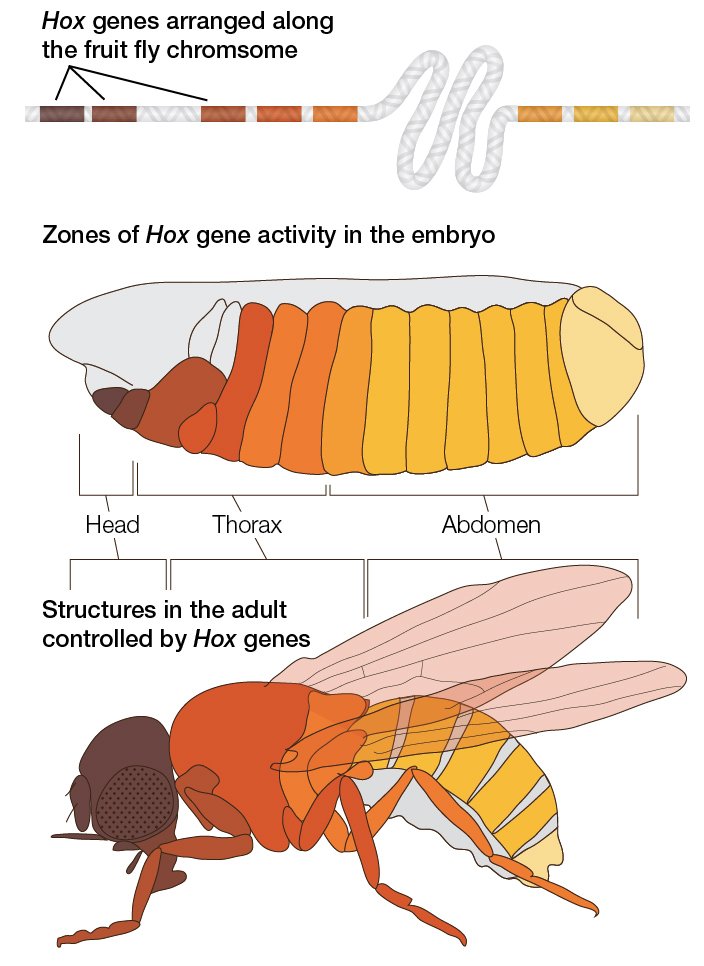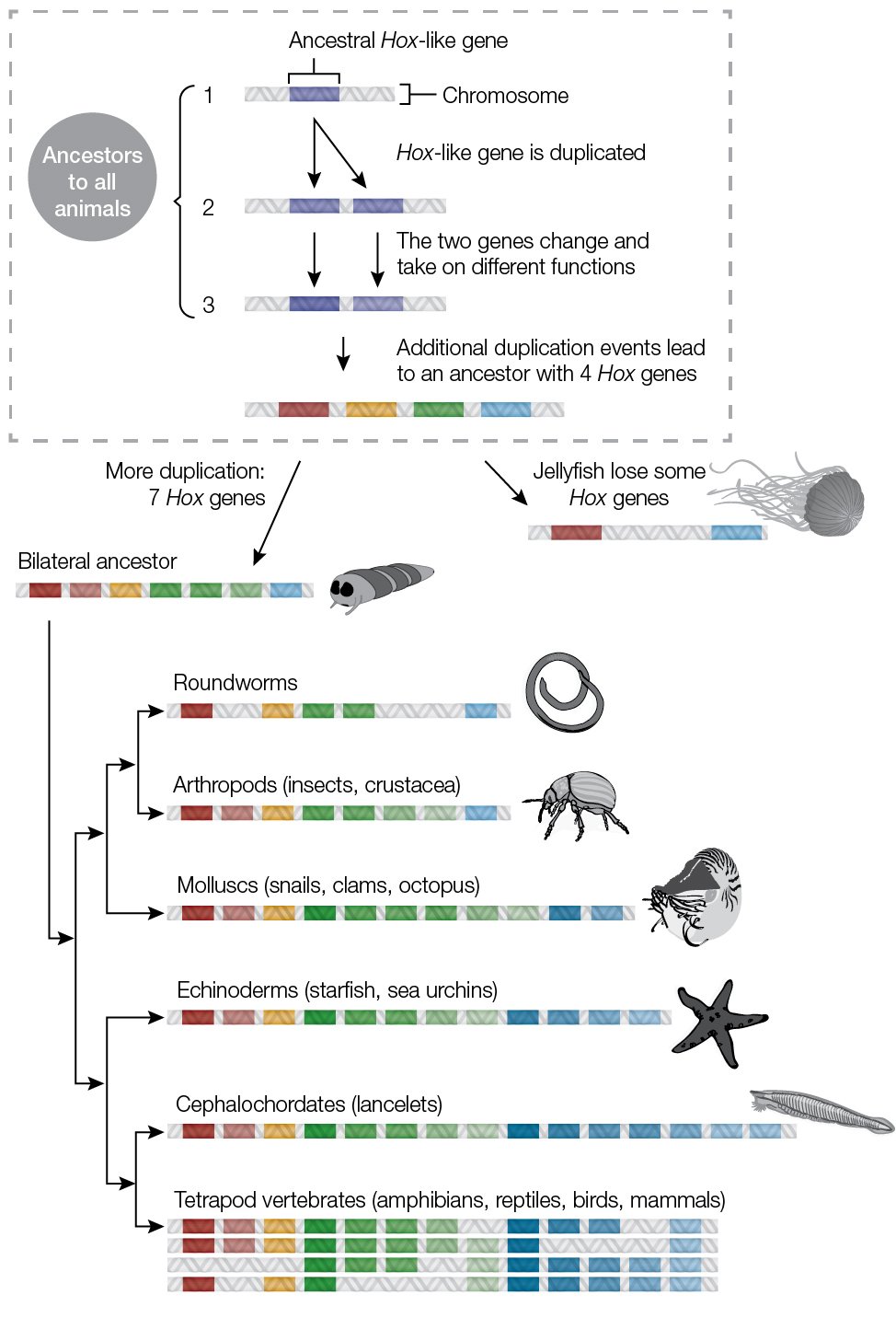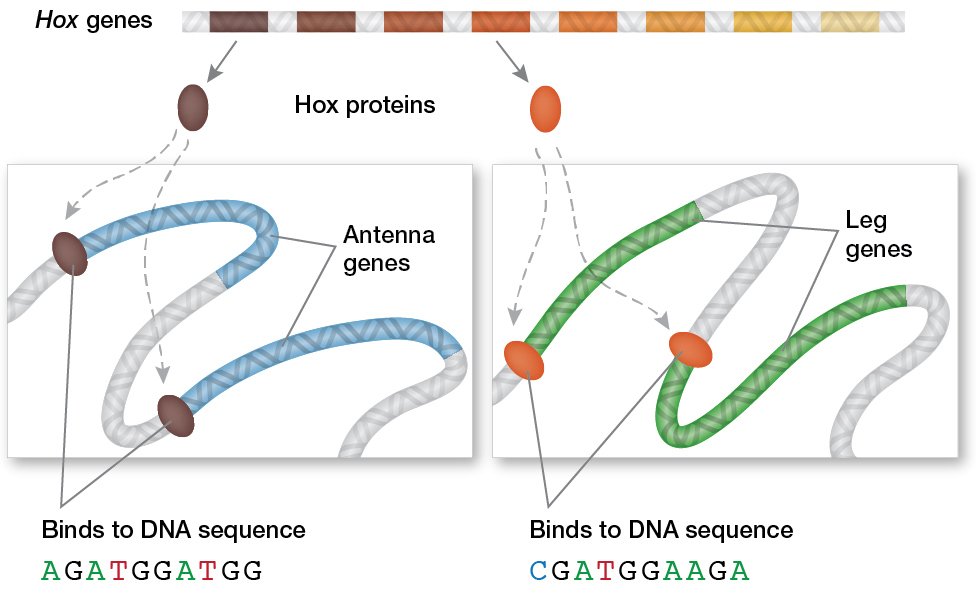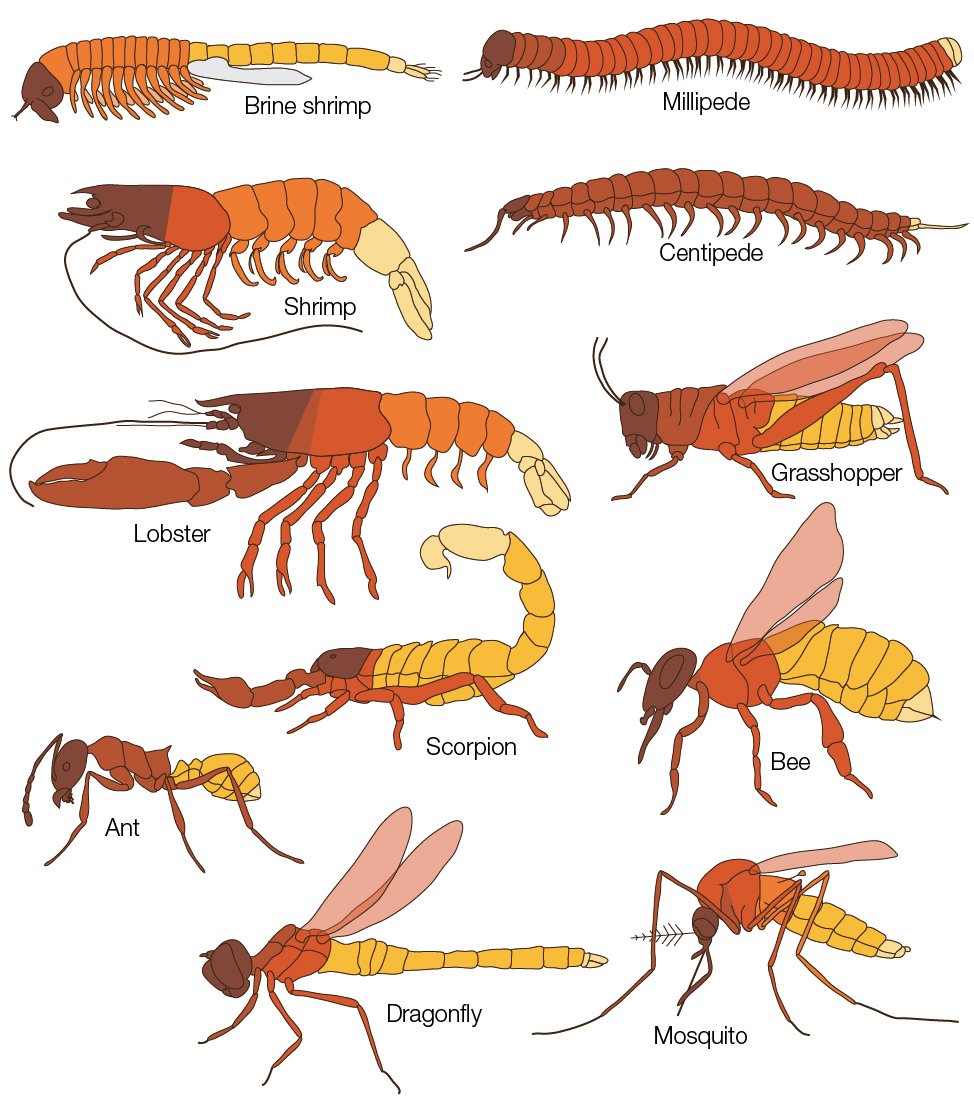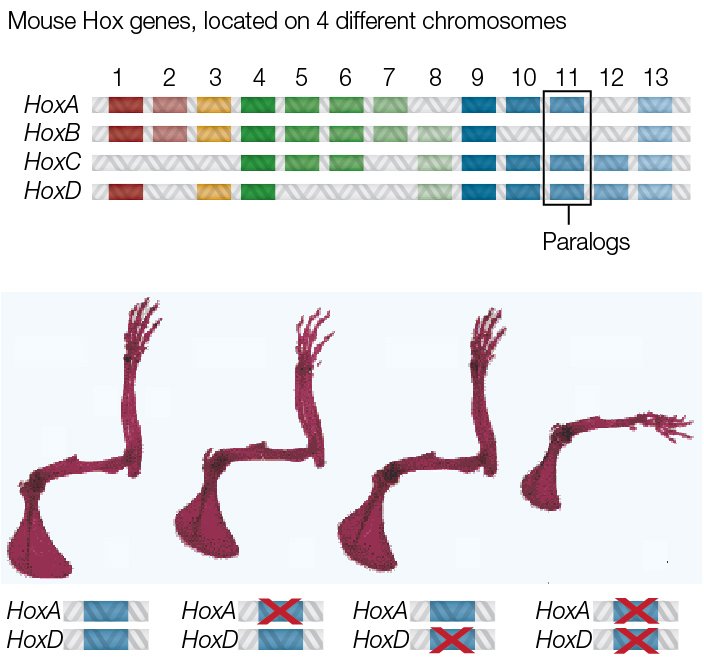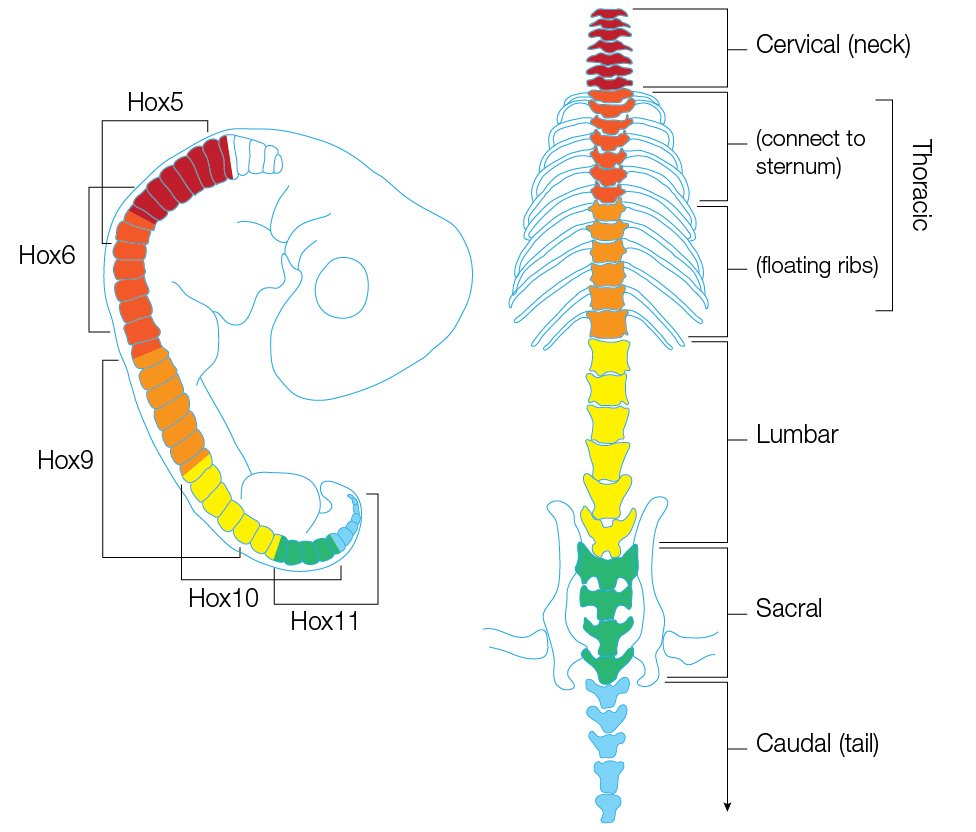Every organism has a unique body pattern. Although specialized body structures, such as arms and legs, may be similar in makeup (both are made of muscle and bone), their shapes and details are different. While an embryo grows, arms and legs develop differently due to the actions of homeotic genes, which specify how structures develop in different segments of the body.
How did scientists discover genes that determine body pattern?
Scientists discovered homeotic genes by studying strange transformations in fruit flies, including flies that had feet in place of mouth parts, extra pairs of wings, or two pairs of balance organs (called halteres) instead of wings. Some even had legs growing out of their heads in place of antennae!
Scientists called these modifications "homeotic transformations," because one body part seemed to have been replaced by another. Researchers, including a group headed by Ed Lewis at Caltech, discovered that many of these transformations were caused by defects in single genes, which they termed homeotic, or Hox, genes.
This work demonstrated that antennal cells carry all of the information necessary to become leg cells. This is a general principle: every cell in an organism carries, within its DNA, all of the information necessary to build the entire organism.
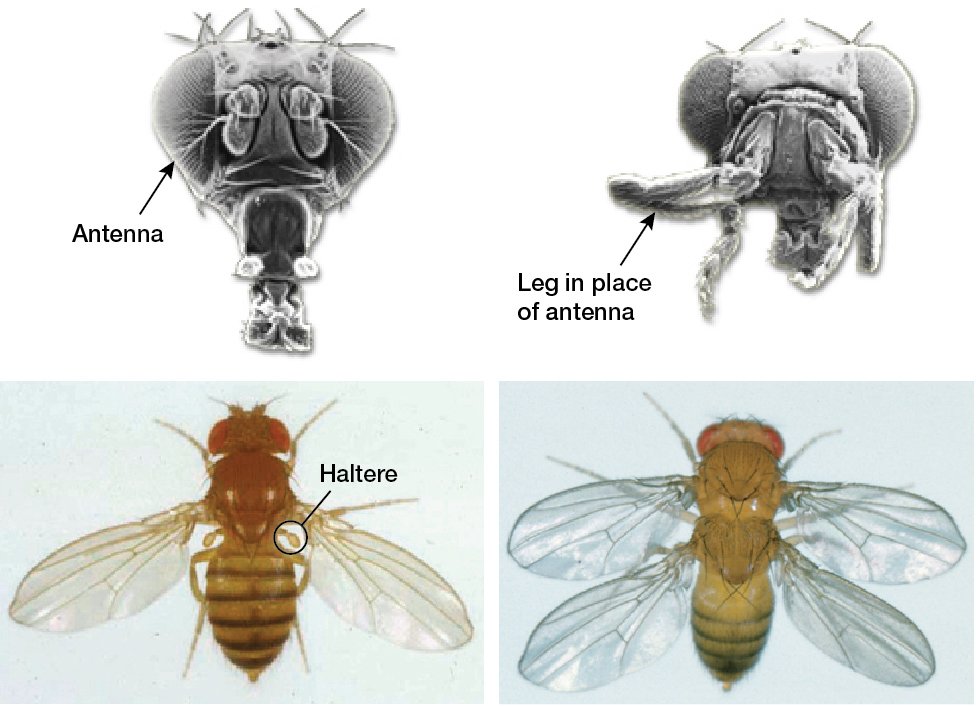
Top: (Left) Normal fruitfly; (Right) Fruitfly with mutation in antennapedia gene Bottom: (Left) Normal fruitfly; (Right) Fruitfly with a homeotic mutation that gives it two thoraxes. Bottom images courtesy of the Archives, California Institute of Technology.
